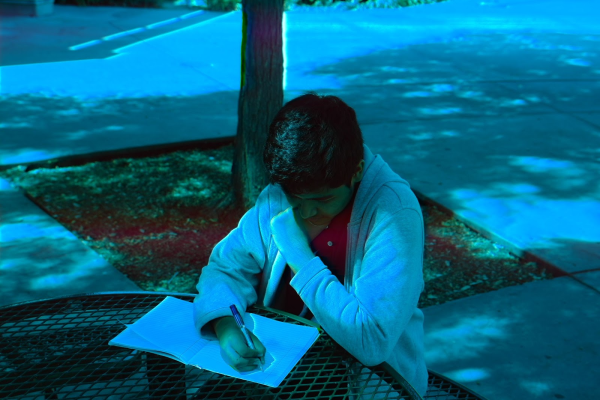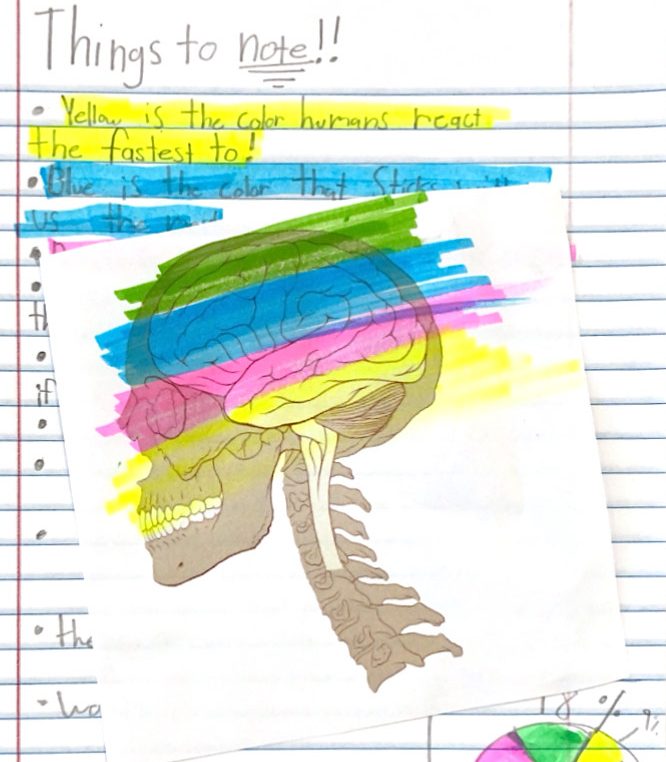Can colors change how we remember notes?
Something we students can all relate to is the moment during a test when a question feels eerily familiar, like you’ve seen it a thousand times. But for some reason, the answer just won’t come to you. What if I told you the color of your notes could be the secret to unlocking that memory?
Studies have shown that certain colors are more effective and others are less effective for taking notes. For instance, yellow is the color that humans react the fastest to. So, what is the best color for remembering notes?
I interviewed students around Helix with various tests, such as drawing stick figures with unique characteristics and different colors to see which color was the most memorable. The results showed that blue was the least distinct stickman, with only 1/4 of people getting all attributes right. In second place, with 3/4 people remembering all of the attributes, was the yellow stickman. Surprisingly, red was the most memorable color, with 4/4 people remembering all of its traits.
The next test showed students 3 different cards with trivia. The trivia on the card would be written with either yellow, blue, or red. The students I interviewed were asked to recall the trivia facts after 3 seconds of memorizing. A little later, I asked them to recite what was written on the cards and every student got the trivia correct. The trivia being, “Sharks existed before trees” (in yellow). “Sloths can hold their breaths longer than dolphins” (in blue). And finally, “There are more prop flamingos than real flamingos on earth” (in red). Each student being able to successfully recite all the cards shows good memory albeit, it’s possible that I gave them too much information on what to look for.
What does this mean?
This suggests that red is a highly stimulating color, able to leave a more lasting impression on our brains while also standing out compared to the other colors. When taking notes, you should write the most important things down in red. Keep in mind, yellow is the color that your brain reacts the fastest to, so you should write to-do lists or sub notes under a big idea with it. All of this note-taking can stress you out, but luckily, blue is a color with calming effects. So, de-stressing by reviewing what you’ve done in blue can keep you cool-headed and productive.
Of course, this was only a small group of students that I got to interview, but the data I collected parallels the data that scientists have gathered on the same topic, showing the merit behind the thought.
So the next time you’re studying for a big test, remember, there are psychological tricks you can apply to make the A grade more than just a faded memory.


